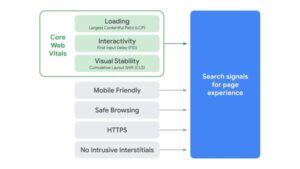Best Payment Practices in E-commerce for payment process is one of the most important stages of the online shopping experience. Any difficulty or complication during this stage can lead to the loss of the customer and abandonment of the purchase. However, with the advancement of technology and increasing customer expectations, it has become essential for e-commerce store owners to adhere to best practices to ensure a smooth and secure payment experience. In this article, we review the best payment practices in e-commerce: 10 tips for success.
10 Tips for Success and Improving Payment Practices in E-commerce
Optimizing the payment process in e-commerce is a strategy adopted by online store owners to make it easier to receive payments from buyers and encourage a large number of customers to complete their purchases.
Best Payment Practices in E-commerce: Offer Multiple Payment Options
Customers prefer to use various payment methods that suit their preferences and circumstances. Therefore, it is essential to provide multiple payment options, including credit cards, e-wallets, cash on delivery, and bank transfers. This flexibility helps meet the needs of a wide range of customers.
When choosing the right payment method, it is advisable to research the target market thoroughly to identify the most popular payment method, and then adopt it as part of your payment options to make it easier for your customers.

Best Payment Practices in E-commerce: Offer Flexible Payment Options
Providing flexible payment options, such as deferred payments or installment plans, encourages customers to complete their purchases without hesitation or concern, especially when purchasing high-priced items. Many payment gateways offer this flexibility, allowing your store to offer deferred payments or installment options with a maximum of 5 payments.
Adopting flexible payment options not only increases customer satisfaction but also boosts sales, as it is an effective way to attract customers who may be hesitant to pay the full amount upfront.
Best Payment Practices in E-commerce: Simplify the Payment Process
The simpler the payment process, the higher the likelihood of completing the purchase. Therefore, it is preferable to allow the customer to purchase the product or service without the need to fill out long or unnecessary forms. Additionally, you should remove the compulsory account creation step and allow customers to check out as guests, as well as use auto-fill for their details.
Increasing Security in Transactions
With the increasing concern about online security, ensuring safe payment processes has become crucial. A key recommendation when optimizing payment processes is to use encryption technologies like SSL to protect customer data. Additionally, it is important to provide the necessary security certificates to build customer trust and ensure compliance with security standards like PCI DSS.
Best Payment Practices in E-commerce: Improve the User Interface of the Payment Page
The design of the payment page should be simple, easy, and clear to facilitate the customer’s purchase process without distractions. It should focus on key elements like payment options, delivery information, and final confirmation. Avoid any unnecessary elements that might slow down the page loading time or confuse the customer.
Best Payment Practices in E-commerce: Instant Customer Support
Some customers may encounter issues during the payment process that need immediate resolution. Therefore, it is essential to provide fast and immediate customer support through various channels such as live chat or email.
Best Payment Practices in E-commerce: Minimize Transaction Fees
Transaction fees can be a sensitive issue that influences the purchasing decision. Therefore, it is advisable to reduce these fees or offer special deals such as “free shipping” or “discounts for card payments.” These incentives can encourage customers to complete their purchases and increase brand loyalty.
Best Payment Practices in E-commerce: Analyze Data and Improve Performance
It is important to regularly monitor and analyze payment data to understand customer behavior and identify any common issues that occur during payment processes. Using this data, steps can be taken to improve payment processes and increase conversion rates. It also helps in identifying trends and offering special deals to customers.
To conduct in-depth analysis, tools like Google Analytics should be used to constantly monitor the payment page’s performance, then look for points where customers drop off or leave the site and work on improving them to reduce cart abandonment rates.
Innovative solutions for successful businesses! Jawwez offers you the tools you need to grow.






